Abheet Dwivedi, Senior Director, Moglix, Speaks on the Future of Infra Supply Chain in India

Abheet Dwivedi, Senior Director, Moglix, Speaks on the Future of Infra Supply Chain in India
“With the inception of the National Infrastructure Pipeline, India’s investment in the infrastructure sector as a percentage of the GDP is now at 8.5%, which is quite phenomenal when you look at historical trends of our infra spending.”
Abheet Dwivedi, Senior Director, Infra & PSU
Moglix is into the supply of materials; every material that is needed in the infra value chain. Abheet Dwivedi, Senior Director, Infra & PSU was in conversation with ET Infra for the podcast “The Future of Supply Chain in India”. During the conversation, Abheet Dwivedi shared his perspective on a range of questions concerning the infrastructure industry vertical and how Moglix is disrupting the infrastructure supply chain space for EPC companies with a unique offering of a digitally integrated suite of supply chain solutions. Here are the excerpts of the conversation:
Interviewer: So, let me begin by asking you about the long-term spending by the infrastructure companies say in the next five years under this national infrastructure pipeline, what do you make of this?
Abheet: Thank you…. So, firstly, if you look at historical spend perspective, from the 2000 onwards all the way up almost 2016 -17. With the NIP, national infra pipeline coming into the picture, this spend has actually more than doubled to in the current budget to almost 3.5%. we are spending close to eight and a half percent of our GDP on infra which is quite phenomenal compared to the levels we had historically seen….
Interviewer: And what about the digital project management under the ambitious PM Gati Shakti plan, which was unveiled by the Prime Minister in October?
Abheet: ….One thing that has historically been missing is “how efficiently are we spending the infra budget”, right. We have started measuring this more coherently now. I would like to mention four major initiatives….
Moglix Set To Take a Big Leap, Tap Bigger Opportunities
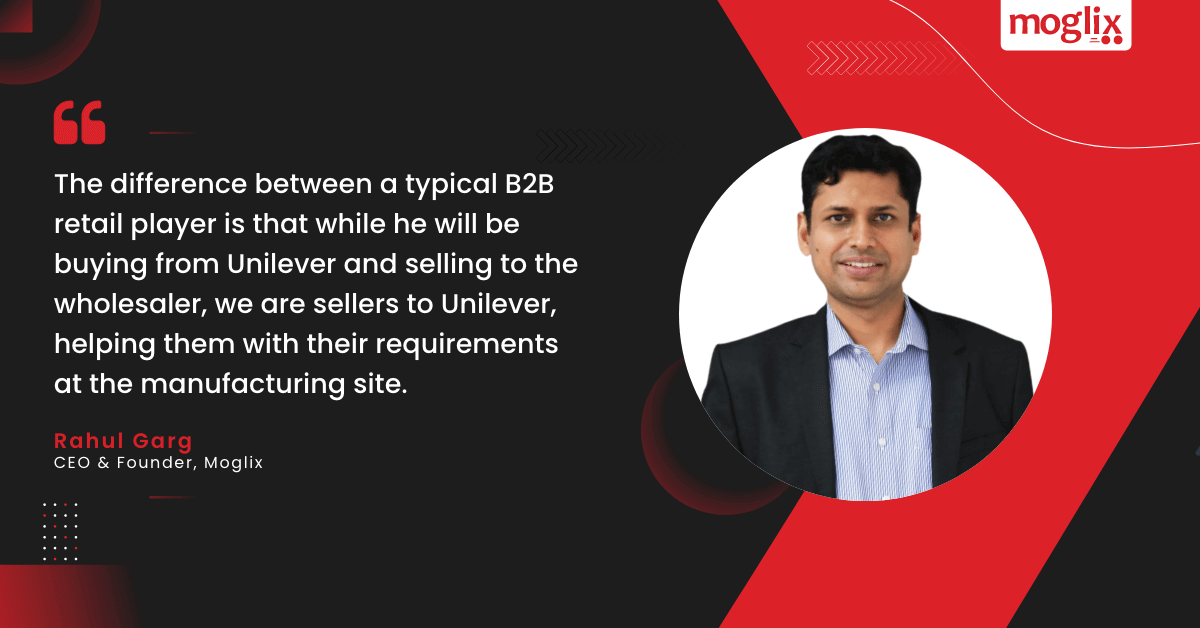
Moglix Set To Take a Big Leap, Tap Bigger Opportunities
‘Moglix’ may sound like an unusual name for a company. But if you suspect that it has been derived from the iconic character in Rudyard Kipling’s Jungle Book, you will have scored ten on ten. The founder of the Noida-headquartered start-up, Moglix, dealing with regular supplies to enterprises, infrastructure projects and now also supplying chain financing (basically B2B retail play) is clear in his mind: his business should eventually have the universal appeal of a character like Mowgli.
“It had taken me more than two months to finalise this name. I was looking for a name which can readily establish our brand identity. Alibaba and Google are great brand names. And everybody knows Mowgli,”
Rahul Garg, CEO & Founder, Moglix
Since the beginning of its journey in 2015, the company has been in the news for having the legendary Ratan Tata supporting it individually as an investor which Garg says has been a huge blessing.
As Moglix grows in age, its future leaps is getting higher. The company recently saw its valuation more than doubling as it touched $2.6 billion after Series F funding around the end of January when it raised a further $250 million (a total of $470 million has been raised since its inception). Starting mainly with tools and equipment suppliers to industries and manufacturing units, the company has significantly broadened its portfolio over the years and today boasts of over 700,000 SKUs in 50-plus categories across MRO, packaging and infrastructure. It has over 5 lakh SME units as part of its ecosystem and it manages 35 warehouses across the country.
“70-80 per cent of our backend logistics requirements is taken care of by our own team. We partner with players outside of the company mainly for long-haul transportation,”
Garg adds
Claiming complete ownership of the source-to-site supply chain for EPC construction projects and business, it serves some of the largest infrastructure and construction companies, energy companies, and oil & gas producers.
“We decided to launch the vertical in 2020 because of the demand from customers. Most infrastructure sites are geographically dispersed and in non-metro locations. The firms working in those locations want reliable partners for the regular needs of their engineering and design teams working on site,”
Abheet Dwivedi, Director (Infra & PSU), Moglix
Meanwhile in July last year, Moglix also ventured in a new direction to further endear itself with manufacturing customers when it acquired Vendaxo (founded in 2017), an e-commerce platform for the buying and selling of used machinery. According to a company note, Vendaxo is a B2B e-commerce platform that provides used machinery liquidation solutions to MSMEs and large manufacturing enterprises such as Siemens, Arvind India, Marico, Raymond, and Torrent Pharma. India’s used machinery market is estimated to be worth close to Rs64,000 crore.
Leveraging Cloud and Data Science to Manage Demand Spikes
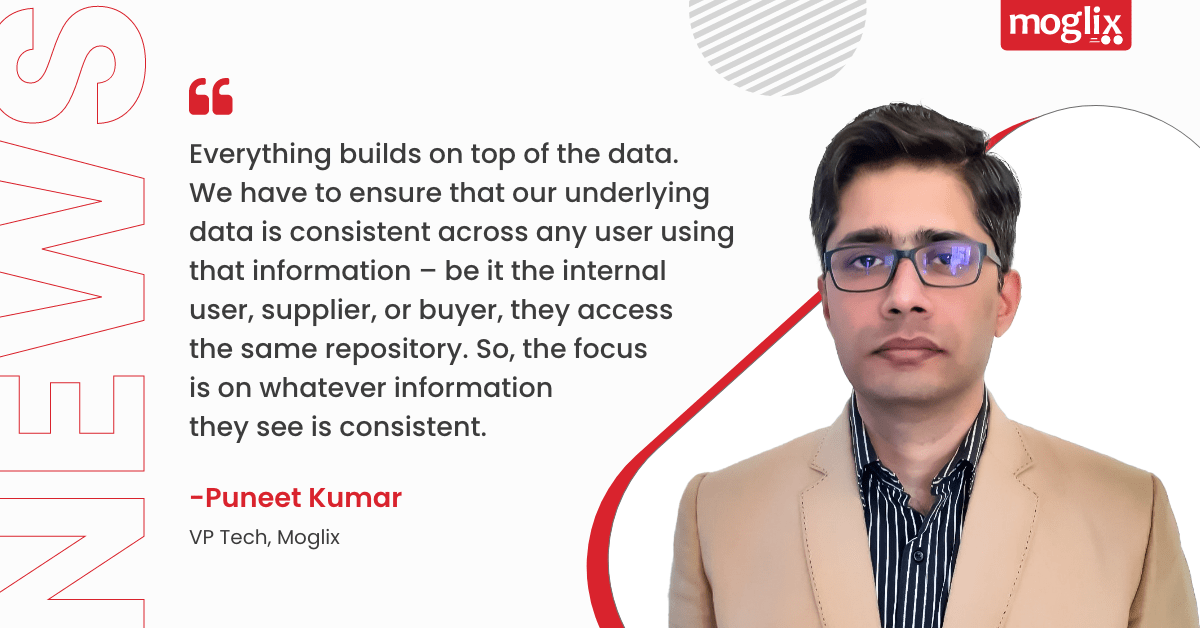
Leveraging Cloud and Data Science to Manage Demand Spikes
Noida-based Moglix has played a pivotal role in transforming B2B commerce since its launch in 2015. Having achieved the distinction of becoming the first unicorn in the industrial B2B commerce platform in the manufacturing space, the company is experimenting with a slew of technologies to manage data and the spikes between the business cycles while providing a consistent user experience.
“If you look at the 100% of the orders that we process in a month, the first half of the month is slightly leaner, where we would do about 25% of the transactions. Maybe in the next five days, we will do an additional 25%, and during the last 5-10 days, a big chunk of transactions will occur,”
says Puneet Kumar, VP Tech, Moglix
“There is much information moving to and fro between systems, and a lot of them are financial in nature, having very core data from the customer side, the supplier side. So, there is much focus on the security of the systems we take care of really well. As we start transacting with more and more businesses, the volume of data that we are storing is also going up. So, again, efficient cloud models will enable us to scale up those demands,”
Kumar adds.
The company says that it follows security at multiple levels, such as data encryption, which happens at the application and network level, two-factor authentication levels, and making data as granular as possible based on the user’s role. Kumar also talks about how Moglix ensures a consistent and integrated user-centric and cross-channel customer experience.
Leadership in 2022: Building Workplace Resilience
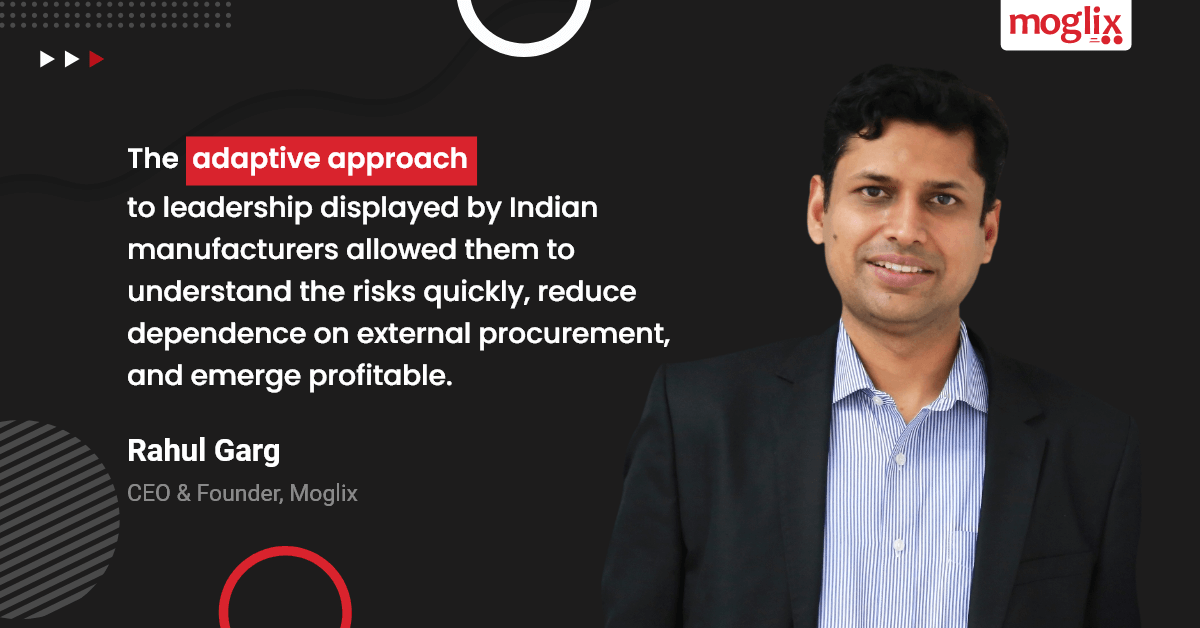
Leadership in 2022: Building Workplace Resilience
One of the leaders I have greatly admired is the late former prime minister Shri Lal Bahadur Shastri who was not only a phenomenal global leader but was also known for employing humility and good governance in his playbook to bring many structural reforms in the Indian economy and lead the way for India in times of crisis.
Every leader has a unique way of handling a crisis – and what differentiates good leaders from others is the way they lead in times of adversity, turn obstacles into opportunities, and navigate the way ahead for their workforce.
But it’s easier said than done.
Sometimes in adversity, leadership can be in a crisis too.
Adapt and Evolve
India, which did not manufacture personal protective equipment (PPE), went from just three lakh PPE kits in January 2020 to becoming the world’s second-largest PPE manufacturer, producing 450,000 units daily within a year. As the demand for PPE skyrocketed, Indian businesses leaned on innovative approaches to repurpose their own production lines to meet this excessive demand and ensure business continuity. While a number of alcohol manufacturers set up labs to manufacture sanitizers, some textile manufacturers repurposed their factories to churn out protective gear. This adaptive approach to leadership displayed by Indian manufacturers allowed them to understand the risks quickly, reduce dependence on external procurement, and emerge profitable.
Empathize and Nurture
Nurturing employee well-being also became critical to developing workplace resilience. Even when the pandemic ruptured our personal lives and health, proactive leaders were busy developing remote workflows and setting up flexible working environments to create clear and frequent lines of communication. Sharing tales of courage and countless stories of kindness rekindled hope and faith among employees while monthly meetings, informal virtual connect sessions and mental health programs created a positive momentum on overall employee wellbeing in the hybrid working model.
Building a future-ready business
Make products that your customers want and will need in the future. Innovation will be key to lead this transformation. For businesses to scale further in the post-pandemic environment, leaders will be required to employ strategic levers which will drive the maximum impact required for the business to thrive. They will need to experiment small and scale big, making sure the budgets are being utilized in the right way. They will have to get creative and explore newer distribution channels, tap into their network, and be unafraid to disrupt or get disrupted. Only then will we emerge stronger and lead the way for a revitalized supply chain business and leadership in 2022.
Building Infrastructure To Connect India`s Highways to the Global Supply Chain
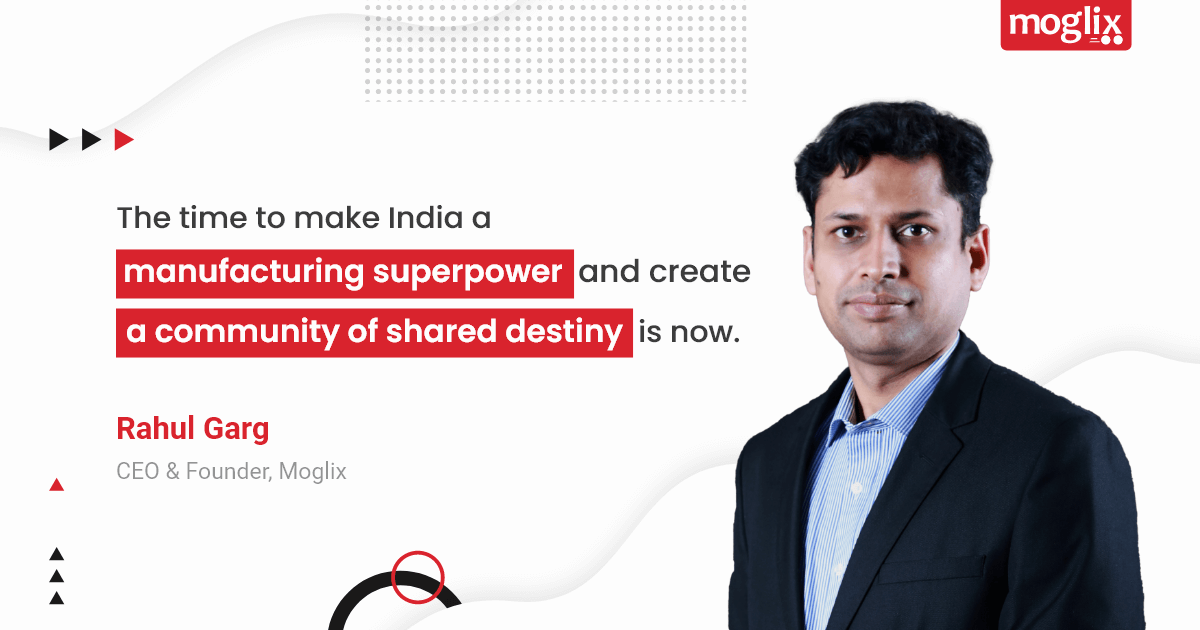
Building Infrastructure To Connect India`s Highways to the Global Supply Chain
At 14 per cent, India has one of the highest logistics costs relative to GDP. Similarly, India’s power cost as a percentage of GDP is also among the highest in the world. This has limited the competitiveness of India’s products in the past. For India to be a manufacturing global superpower, infrastructure creation is the foundation.
By connecting India’s upcoming cities to better opportunities for domestic trade it will enable business continuity. Infra-building initiatives like the 100 Smart Cities Mission and the PLI scheme covering 13 sub-sectors will enable Indian manufacturing to widen its footprint into tier-2 and tier-3 cities.
Infrastructure creation will enable small and large manufacturers in India to connect to EXIM trade opportunities. Robust infrastructure for EXIM trade such as airports, ports, inland container depots, and logistics parks will allow Indian manufacturing to leverage the untapped potential of MSME suppliers through greater local capacity utilisation. Infrastructure creation alone can contribute 4.5 per cent to India’s GDP growth rate every year.
The lack of visibility into relevant metrics distorts the creditworthiness assessment of MSMEs and slows down the release of working capital. Agile cash flow is the fuel that India’s MSMEs need. A shift from offline to digital credit disbursal can strengthen MSMEs’ balance sheets.
Digital supply chain financing platforms leverage dynamic metrics like cash flow to make credit approvals safer through more accurate underwriting and enable quick on-demand credit injection into MSMEs’ balance sheets.
A switch from cash-based offline credit disbursal to digital supply chain financing can add three percent to India’s GDP every year.
Digital transformation is the multiplier that will bring these together to work seamlessly for us and our partners across the world. The time to make India a manufacturing superpower and create a “community of shared destiny” is now.
B2B Commerce Unicorn Moglix raises $250 Million in Series F funding

B2B Commerce Unicorn Moglix raises $250 Million in Series F funding
Moglix, the industrial B2B startup for manufacturing and supply chain ecosystem, has raised $250 million in its latest Series F funding round, stands at a valuation of $2.6 billion. This round of investment was led by Tiger Global and Alpha Wave Global with Hong Kong based-investment firm Ward Ferry coming on board as a new investor.
Early investors, who had invested in Moglix during the seed stage have seen an 80X return on their investment in this B2B commerce firm. Moglix is one of India’s largest and fastest-growing B2B Commerce companies. It works with manufacturing and infrastructure companies to transform their end-to-end supply chain, from procurement to distribution. In May 2021, Moglix became the first B2B Commerce unicorn or a startup with over $1 billion valuation, in the manufacturing sector, raising $120 million.
“We are happy to have the continued support and faith of our investors, customers, suppliers and team. We are excited to welcome Ward Ferry onboard. We are focused on our mission to enable the creation of a $1 trillion manufacturing ecosystem in India,”
Rahul Garg, CEO & Founder, Moglix
The firm is backed by marquee global investors such as Tiger Global, Alpha Wave Global, Sequoia, Accel Partners, International Finance Corporation and Harvard Management Company Industry stalwart. Also, Ratan Tata, Chairman Emeritus, Tata Sons had invested in the start-up in 2016. Leaders from the start-up and manufacturing communities such as Kalyan Krishnamurthy, Vikrampati Singhania, Shailesh Rao have been investors in Moglix.
Rahul Garg, CEO, Moglix: On A Mission To Impact 100 Million Lives By 2030

Rahul Garg, CEO, Moglix: On A Mission To Impact 100 Million Lives By 2030
Rahul Garg is raring to go. And he wants to do it quickly.
That’s why just a few months after his company Moglix became a unicorn, Garg set up the Mogli foundation, which will work with organizations to bring innovations in areas as diverse as health care, environment, and livelihood in the country. The idea came largely from his own experience in India’s fight with the second wave of Covid-19.
“We want to now become the front and centre of everything manufacturing, procurement, and everything related to supply chain finance”
Rahul Garg, Founder, Moglix
India’s e-commerce B2B market is currently pegged at $1.7 billion, according to a report by consultancy firm RedSeer. It is expected to grow at an 80 percent compound annual rate (CAGR) to reach $60 billion by 2025. By comparison, the B2C e-commerce market is currently worth some $18 billion and is expected to grow at 40 percent CAGR. The country’s offline B2B market itself was estimated to be worth some $700 billion in 2018-19.
“It’s still very early days and I think the idea is can we impact 100 million lives by 2030 in a positive manner across health care, environment, and livelihood,” Garg says. “We have realized there is a larger purpose and larger objective that you can, as an organization, have to create impact.”
The company has already launched operations in the UAE, a market it is now bullish on. It works with over 500 global enterprises to streamline their procurement and supply chain at more than 3,000 plants across infrastructure, metals and mining, oil and gas, chemicals, pharma, auto, and FMCG, among others. In addition, it also boasts a supply chain network of over 16,000 suppliers and over 35 warehouses.
Strategic Acquisition, Expansion and Scaling Up: Moglix Growth Action Plan in line
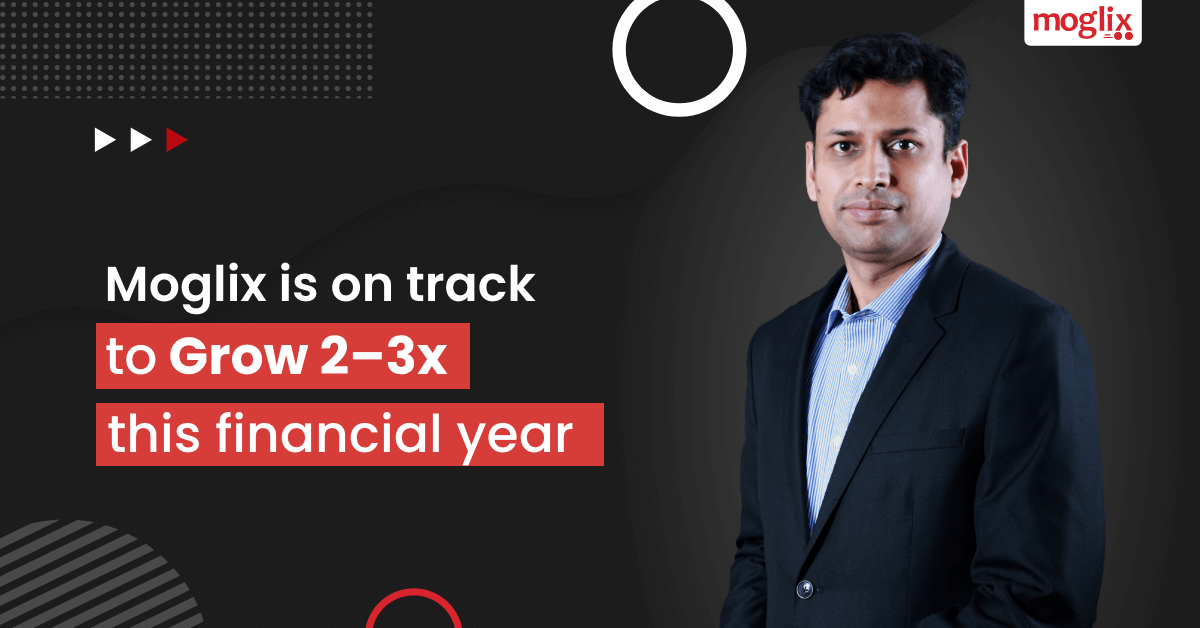
Strategic Acquisition, Expansion and Scaling Up: Moglix Growth Action Plan in line
Business-to-business (B2B) commerce platform Moglix, which stormed into the unicorn club this year after raising fresh funding at a valuation of $1 billion, expects to breakeven in 18-24 months even as it looks to make acquisitions, expand its categories and double down on its Middle East business.
“We have found that while today on the consumer side there is a lot of capability to get lending access in a fast manner from many platforms, the same thing on the B2B side is missing,”
Rahul Garg said
We believe that India has a $150-200 billion worth of financing need in the B2B space and there is at least $30-50 billion worth of need unfulfilled today. If we execute it properly, we are looking at $2 billion to be disbursed annually as part of the platform in 12-18 months.
Talking about his international plan and expansion in UAE, he added
“We entered the Middle East two months back. We have a team and a warehouse there and we are doubling down in the region. On the one hand, we have shipped to more than 120 countries over the last six years. We were shipping pandemic PPE (personal protective equipment) supplies in more than 25 countries. The other dimension is how our full-stack solutions in India are applicable across emerging markets (and how do we take it there).”
Moglix grew at 3x plus over the last 18 months as a company. We continue to scale our offering across multiple categories and there is always the unpredictability of what happens in the next few months but we are on track to grow 2-3x in this financial year. We have provided liquidity during the last two fundraisers to our employees. We cover 25-30% of our employees as part of the ESOP plan. We are continuing to double down. We would have announced Rs 30-40 crore worth of ESOPs. In the last 12 months, we hired more than 500 people. We aim to hire 300-400 people in the next six months. We didn’t do any layoffs during the pandemic.
How Augmented and Virtual Reality is becoming the future of manufacturing?
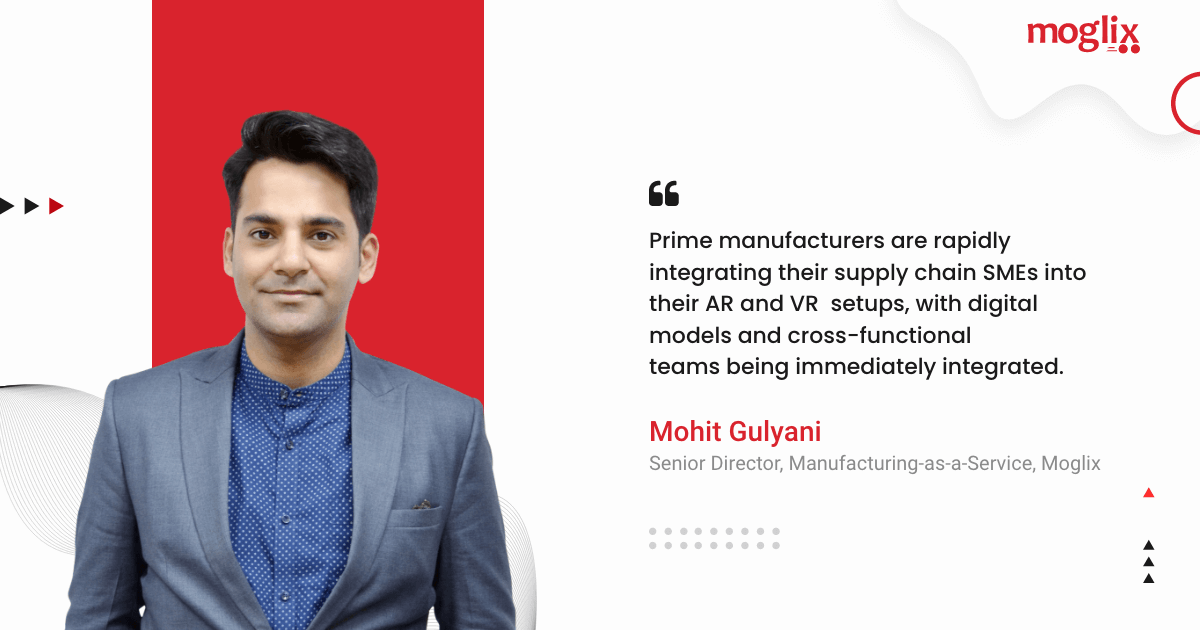
How Augmented and Virtual Reality is becoming the future of manufacturing?
The applications of AR and VR in various strata of the manufacturing sector can help it grow out of time-consuming, redundant cycles of functioning. AR is bringing precision to production and empowering workers with state-of-the-art methods for efficiency and ease. Through personalised guidance, automated support,better monitoring and analysis of faults & flaws, this technology assists people in focusing on their work and having an eye for detail. The ability of new-age technologies such as AI, Big Data and IoT to make manufacturing smarter and more inventive has received a lot of attention in recent years. And today, the potential of AR for manufacturing is only beginning to be explored, signalling enormous potential. Because of the development of sophisticated technology, every critical activity previously carried out by a time-consuming, manual method is now automated, simplified and painless. It is yet too early to tell if AR and VR investments indicate a coming revolution that will forever change manufacturing as we know it or if early adopters are experimenting. In any case, virtual technology in production is no longer just hype.
Road to the low-cost transition to Net-Zero lies via Value Engineering
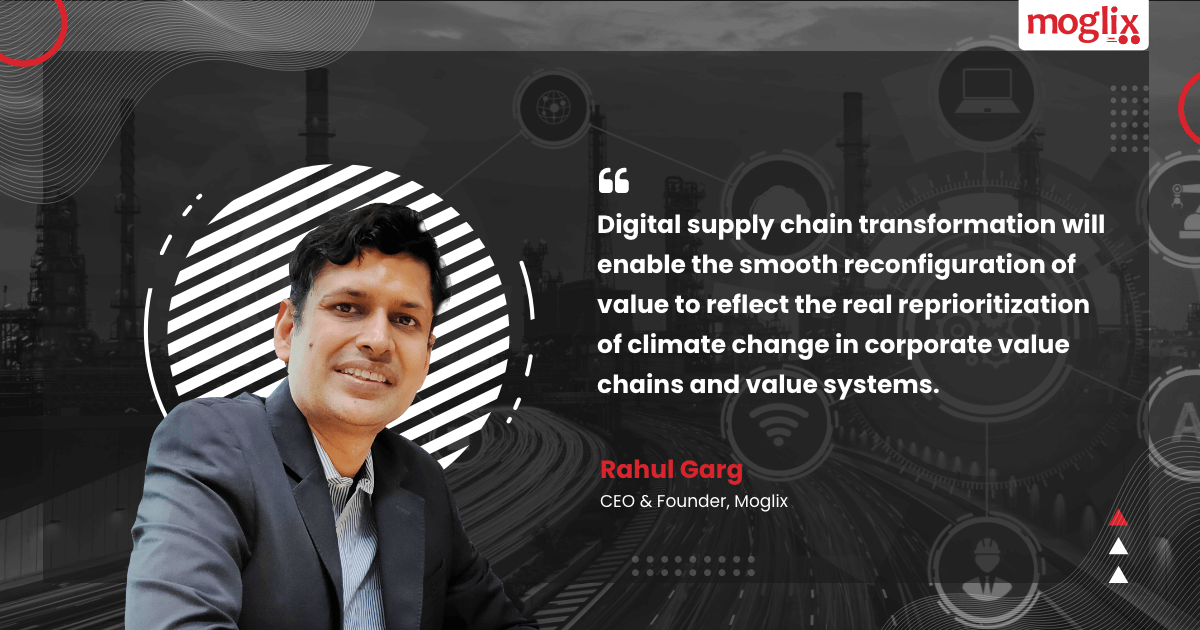
Road to the low-cost transition to Net-Zero lies via Value Engineering
The Glasgow Climate Pact has made it clear that there is a universal mandate to get to net-zero emissions. However, each country will have its own timelines and trajectories. Through their regulatory mandates, governments will start clearing out carbon content from the supply chain, making space for green alternatives. Manufacturers will have to roll out innovative solutions with speed and scale to cash in on the opportunities.
Supply chains are subject to the bullwhip effect, where changes and errors accumulated upstream keep amplifying as we travel downstream. The way to accommodate this characteristic of supply chains is to develop digital solutions which allow flexible reallocation of resources and costs in response to real-time carbon emissions.
Optimizing the logistics planning for the delivery of goods for every procurement and distribution transaction is the first step in reducing the carbon footprint. Businesses will have to leverage data to map critical paths, container capacities, and multiple modes of logistics and choose the least cost-green logistics options.
